WWI was a war of artillery, and all of the powers involved quickly discovered that they were short on heavy guns. The easiest way to plug this shortfall was to turn to the existing sources of large-caliber artillery, naval and coastal defense weapons. As these were not designed to be mobile, the only real option was to use the best way of moving heavy cargo around, the railways.
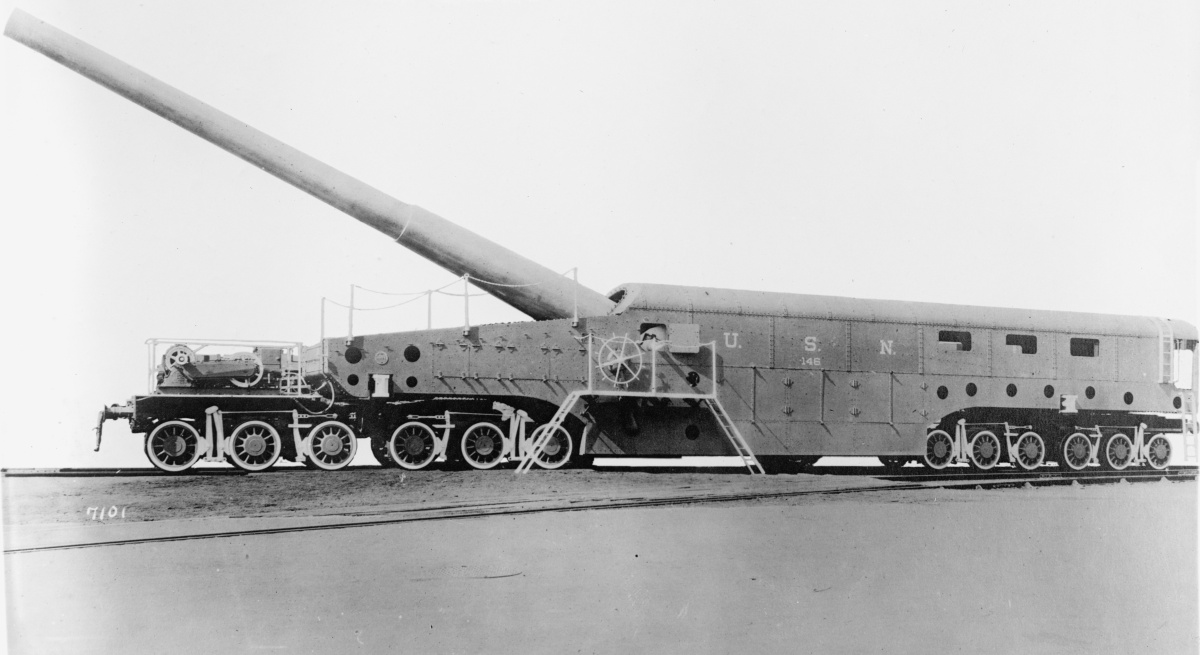
USN 14"/50 Railway Gun
The majority of these guns were manned by crews taken from the units that would normally have operated them, and ranged in size from 6" to as much as 15". Because they were made from second-hand guns, a vast array of types were built, most in relatively small numbers. The British made extensive use of their standard 9.2" gun, long a mainstay of coastal defenses, while the US rushed to fabricate railway carriages for a variety of weapons, including almost a hundred 12" mortars from Endicot-period batteries, as well as 8", 10" and 12" guns from the same era. Only a handful made it overseas before the end of the war, and the story of American railway artillery was instead dominated by five USN 14"/50 naval guns mounted on railway carriages that spent two months in action during the closing days of the war.
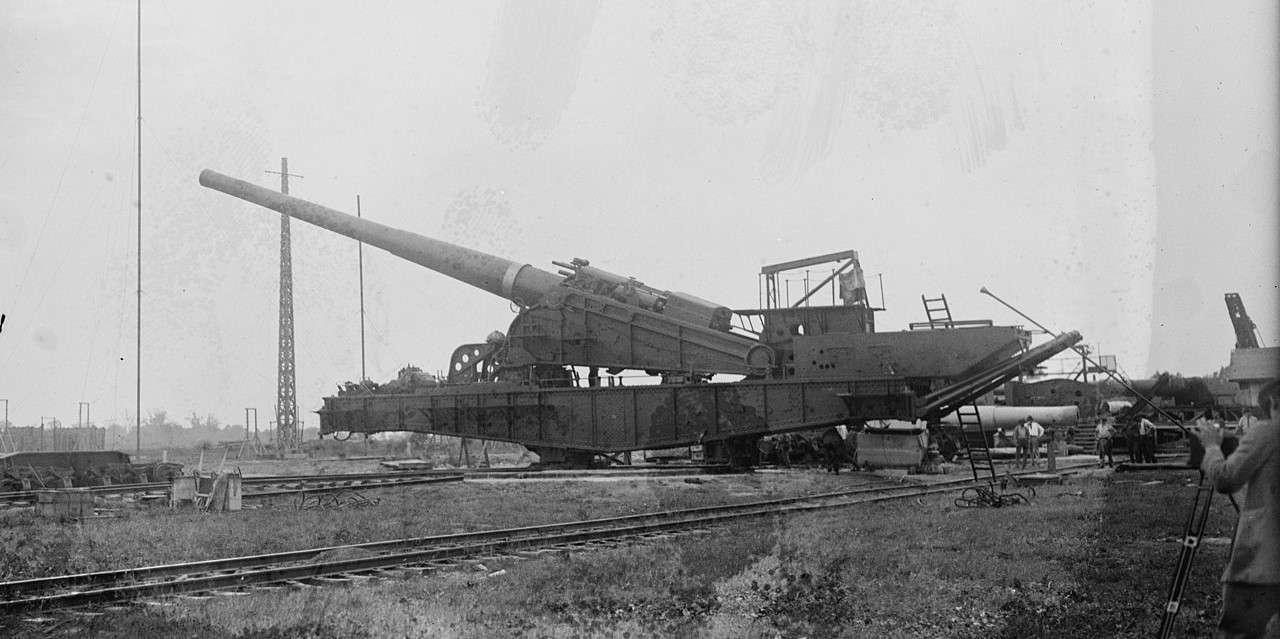
Postwar 14"/50 in coastal-defense mode
After the war was over, interest picked up in using railway artillery in coastal defenses, as it was cheaper and quicker to emplace than traditional artillery. But new mountings would need to be developed, as the ones built for use on the Western Front were designed for firing against fixed targets. The gun would be moved to a piece of track that pointed towards the target and braced against the recoil. The carriage itself was only capable of fine adjustments of maybe 2°, which was perfectly adequate against terrestrial targets. A few guns had more traverse, but for most, new mounts would be required for coastal use, as ships moved far too quickly. The US Army chose to focus on the 8" gun and 12" mortar, whose existing mounts were suitable for coastal defense use, and to design a new one for the 14"/50, which could be used either as a conventional railway gun or for coastal work. In coastal mode, it would be moved over a special concrete platform and the wheels retracted, allowing it to pivot 360°.
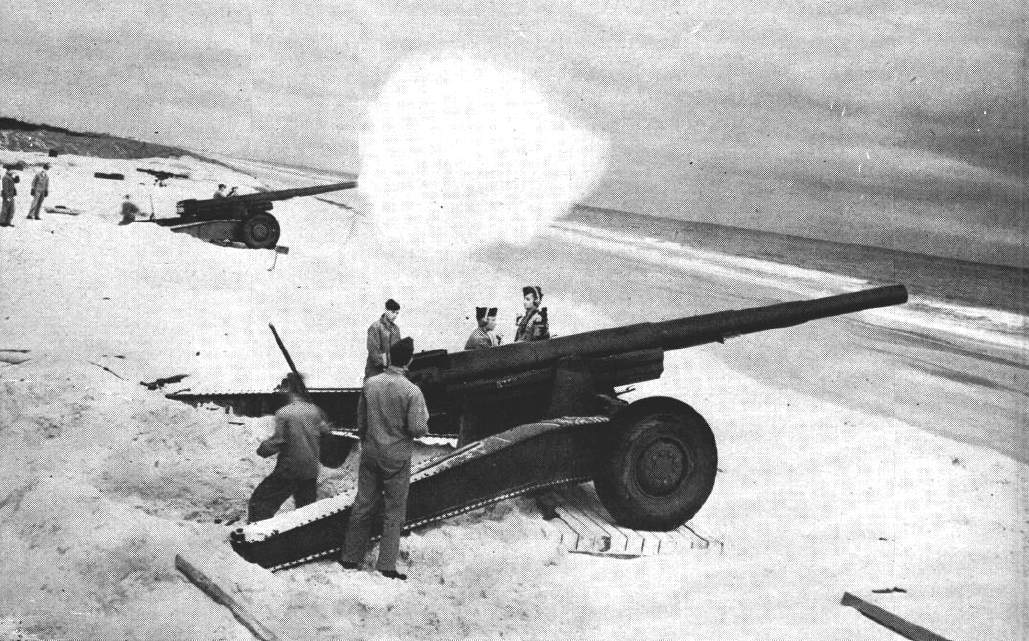
Marine reservists fire 155 mm GPFs
The war had also seen advances in road-mobile guns, most notably the excellent French 155mm GPF, which was swiftly adopted by the US as a smaller coastal gun, particularly as the Navy expected that in the next war it would have to take and defend forward bases for its advance across the Pacific. Several hundred were available in the postwar years, and with some minor carriage upgrades, they would serve until the early 40s.
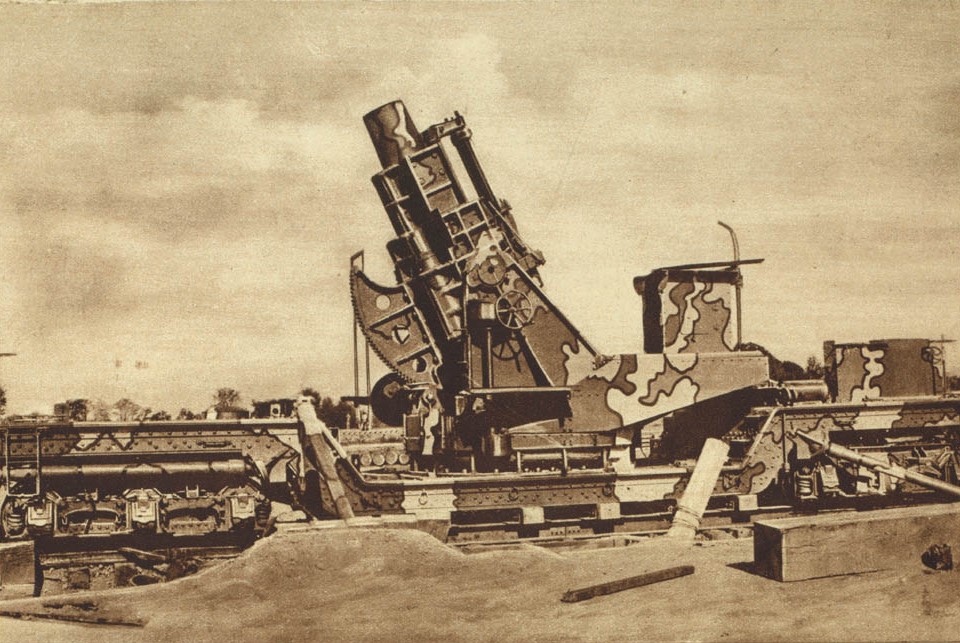
12" railway mortar, as used during the interwar years
But both types of mobile weapon had some serious drawbacks. The biggest was that they couldn't be integrated into the same tight fire-control networks that their stationary counterparts used, as those required precise positioning. Secondarily, their mobility was more strategic than tactical. None of these guns could be adequately fired from an improvised position and they couldn't move that fast relative to a potential enemy force, so there was no chance of a force of mobile coastal defense weapons swooping down on an area when the bad guys came over the horizon. The only place where this might have worked was the Canal Zone, where two of the four 14"/50s were dispatched, with alternative firing positions on each ocean. The other two went to Fort MacArthur, to bolster the defenses of Los Angeles, where their mobility was useful in going to other areas to avoid annoying the neighbors. But if used with these limitations kept in mind, the railway guns could be useful enough if dispatched in times of crisis or to cover an area while permanent works were being built, and they were what was available in the fiscally strained interwar years.
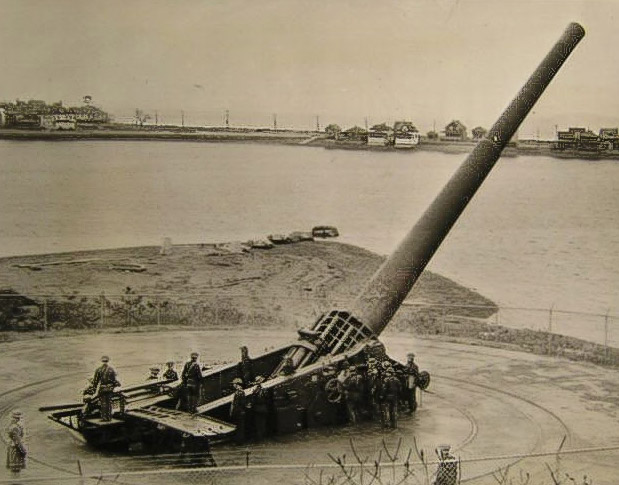
One of the new, mostly-unprotected mounts
The years before and during the war had brought other changes to naval warfare that would impact coastal defenses. One was the revolution in fire control that had taken shipboard gun ranges from a few thousand yards to as much as 10 miles, changing the threat that defenses had to face. Previously, designers could count on shells arriving more or less horizontally, and had built "disappearing mounts", with the guns retracting behind an earth-and-concrete parapet to load. But this left them exposed from behind and above, a serious problem as shells fell more steeply. The increased range was also a problem for most of the existing mounts, as they couldn't elevate enough to match. Some could be modified to solve this problem, while in other cases, existing guns would be fitted on new mounts with greater elevation. For some reason, these mounts were only lightly protected, with dispersion of the batteries serving as their main defense.
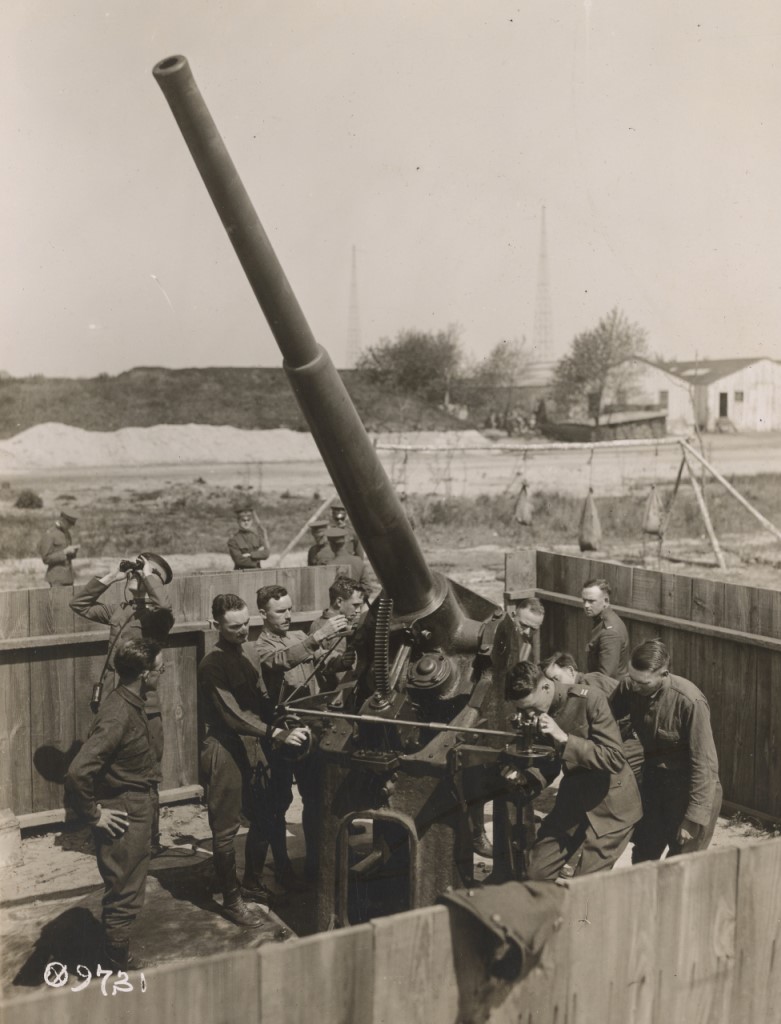
3" M1917 AA gun at Fort Monroe
The lack of overhead protection was also concerning in the face of the increasing effectiveness of aircraft, although the airplane wasn't entirely bad news for the US Army's Coast Artillery, which was given responsibility for shooting at them due to its experience with moving targets. In time, this would come to dominate the Coast Artillery's responsibilities, and the modern Air Defense Artillery is its successor. In the shorter term, existing defenses were bolstered by small batteries of heavy AA guns to thwart attackers from above.
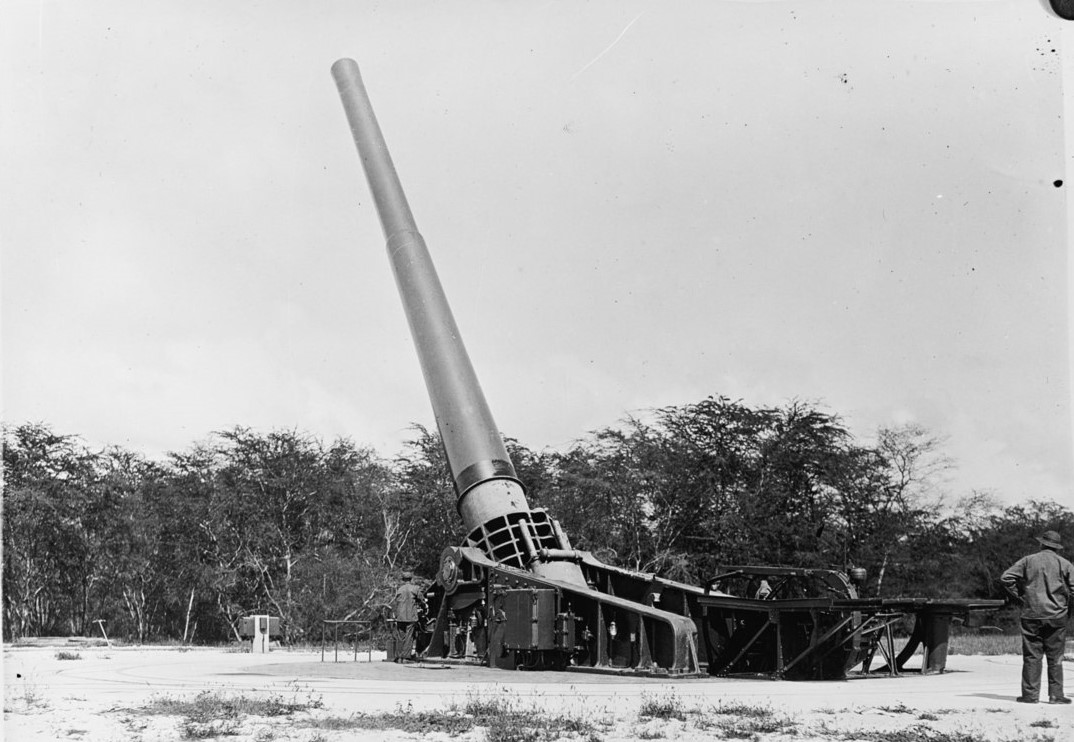
An Army M1919 16" gun at Hawaii
These two factors generally conspired to reduce the effectiveness of coastal defenses. Traditionally, land-based guns had had a major edge in fire control over their shipborne counterparts, an edge that was being steadily eroded by the work done to improve gunnery at sea. Aircraft operating from land bases also made the areas near the coast more hazardous to ships, reducing the risk of attack, and particularly of ships appearing unannounced over the horizon.1 As a result of this, and of the world financial situation in the wake of the war, construction of new coastal defenses was greatly reduced. In America, the location of the defenses also changed, as the Navy's role as guardian of the coasts grew. Instead of being positioned to protect cities, these defenses were located to protect the bases from which the navy would operate, both in the continental US and abroad. This transformation had begun under the Taft board, but by the late 30s, the Navy's needs essentially dictated the entire coastal defense program.
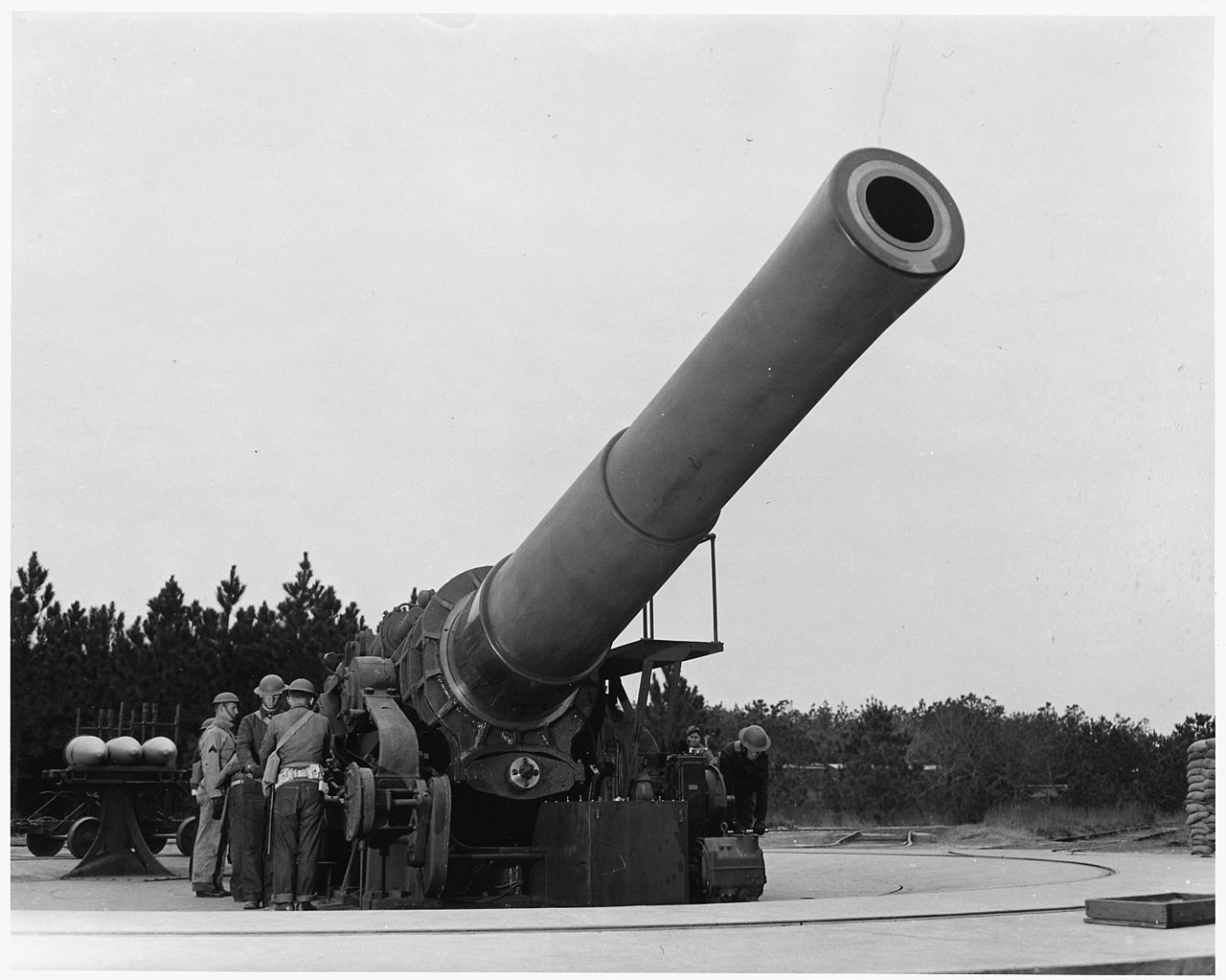
16" howitzer at Fort Story, Virginia
Despite the budget cutbacks, this did mean that there was some money for new weapons and emplacements during the interwar years. The Army had begun developing new guns that could match those now going to sea in caliber, and came up with both a 16" howitzer, four of which were built and installed at Fort Story, Virginia, guarding the entrance to the Chesapeake, and an extremely powerful 16"/50 gun. This weapon was unusual for American guns in being wire-wound, and was the most powerful production gun ever built in the United States. However, it was also terrifically expensive, and only eight were built, six of which were installed to guard Hawaii, New York City and Boston. The program was cut short by the Washington Naval Treaty, which freed up a number of Navy-built 16"/50 Mk 2 guns originally intended for the South Dakota and Lexington classes. While not quite as powerful as the Army's gun, these were free, and installed in all later 16" coastal batteries. During the interwar years, ten were installed in batteries at San Francisco, Panama and Hawaii.
The US was far from the only country to scale back its coastal defenses in the interwar years. Worldwide, fixed defenses were abandoned in favor of keeping fleets at strength, although they would see a brief resurgence during WWII. But before we get to that point, it's worth taking a look at a case where the defenses were improvised, specifically those of Scapa Flow.
1 This was also helped by vast improvements in communications and methods for keeping track of enemy ships. ⇑

Comments
The San Francisco battery is really interesting. I could never figure out if it was intended to be combat-effective or simply ~~PPV~~ for mollifying civilians.
Think we have one of those 3" 1917s at the beach as a WWI monument. (One of the local boys fell off the boat on the way home, sadly)
(or rather, a standard M1903 on a coastal mount, not the '17)
I would love to hear more about the Canal Zone batteries.
@ike: obvious starting point.
Or, alternatively, there's this.